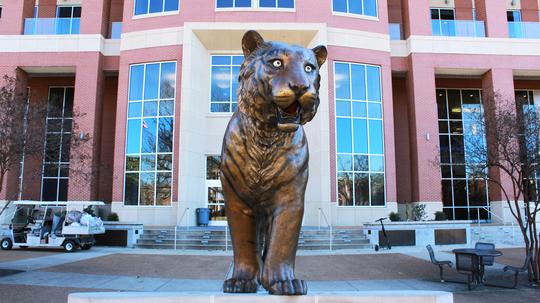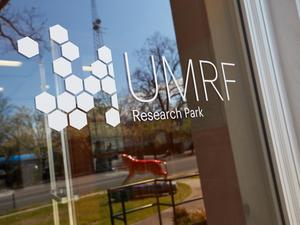
CID-42 is a galaxy quasar, powered by a supermassive black hole and located almost 4 billion light years from Earth.
It sounds like something from a science fiction movie — and it’s set to be observed by a professor at the University of Memphis.
Francisco Muller-Sanchez, Ph.D., an assistant professor in the Department of Physics and Materials Science, recently received two awards from NASA. According to a press release, one, valued at $118,459, will give Muller-Sanchez “general observer" time with the James Webb Space Telescope. As Space.com has noted, the $10 billion James Webb Space Telescope is NASA’s largest and most powerful space telescope — and the hope is that it will probe the cosmos to “uncover the history of the universe.”
Muller-Sanchez will use it for his project, “Unveiling the Nature of CID-42: The Best Candidate for a Gravitational Wave Recoiling Supermassive Black Hole.” And his work could help characterize the main properties of CID-42’s black hole, which hasn’t been adequately studied.
Muller-Sanchez’s second award is valued at $119,128, and will allow him to tap into archival research done by the James Webb Space Telescope, to study NGC 4151. This is an intermediate spiral Seyfert galaxy — and it’s one of the nearest galaxies to Earth to contain an actively growing supermassive black hole.
Awards like Muller-Sanchez’s are crucial for U of M as it looks to keep its status as a top-tier research university. In mid-December, the U of M gained R1 status from the Carnegie Classifications of Institutions of Higher Education, a highly coveted designation that local leaders say can be an economic boon for not just the school but the entire city.
Once R1 status is gained, however, it must retained — Carnegie releases new rankings every three years — and a key part of that is research expenditures.
Fortunately for U of M, Muller-Sanchez’s isn’t the only faculty member who’s scored a research award recently. Below are examples of awards given to the U of M in April:
- Daniel Schaffzin was awarded $314,332 from the City of Memphis
- Xiangen Hu, Ph.D., was awarded $220,843 from the U.S. Department of Defense, with the U.S. Army Research Laboratory
- Thomas Sutter, Ph.D., was awarded $215,250 from the National Institutes of Health
- James Adelman, Ph.D., was awarded $118,272 from Virginia Tech University, with the National Institutes of Health.
- Robin Poston, Ph.D., was awarded $61,250 from Alion Science and Technology, with the Department of Homeland Security
It isn’t unheard of for schools to lose R1 status. According to The Washington Post, Dartmouth College, Mississippi State University, the University of Alabama at Huntsville, and five others lost R1 status in 2015. While Mississippi State and Dartmouth have since regained it, University of Alabama at Huntsville remains an R2 university.
“There are so many universities that have made this their mission now,” Jasbir Dhaliwal, Ph.D., U of M’s EVP of Research and Innovation, said in December. “The economic benefits of being R1 are tremendous."









